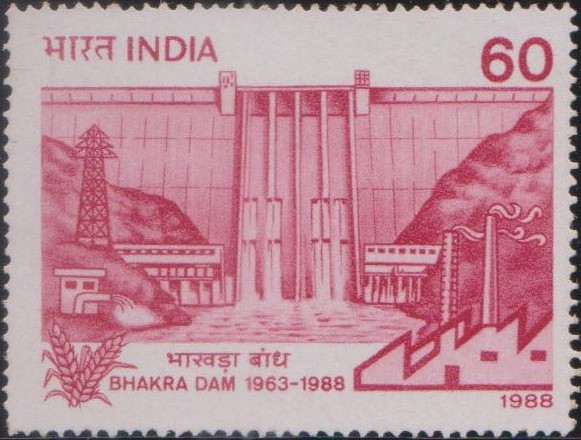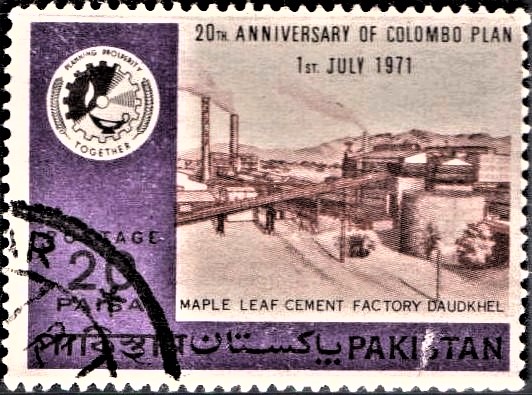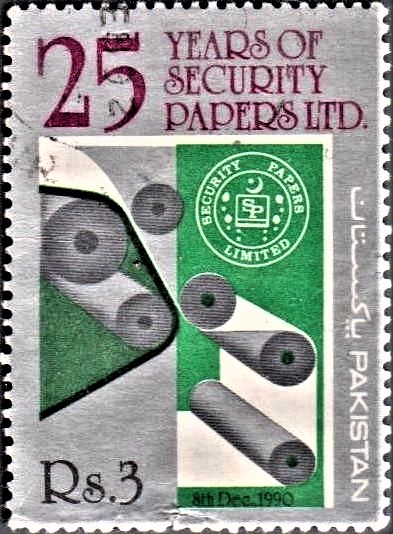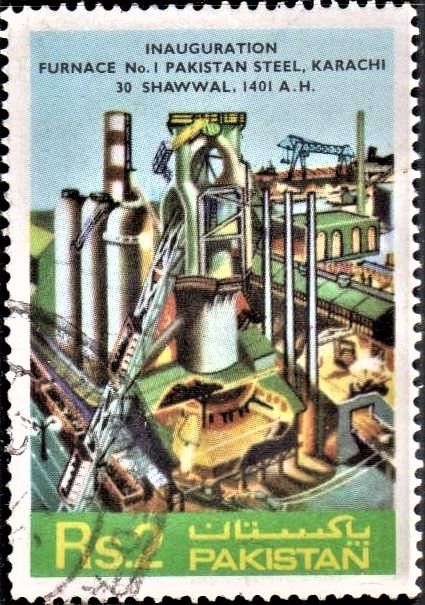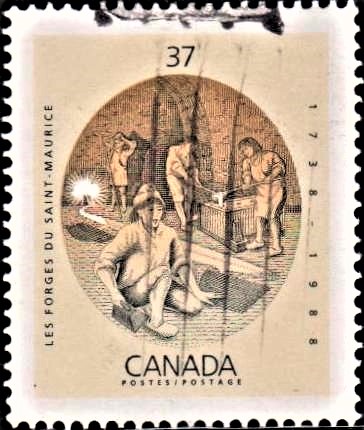
Les Forges du Saint-Maurice (1738-1883)
A commemorative postage stamp on the Forges du Saint-Maurice, first successful iron-working industry in New France and Canada‘s first industrial complex :
 Issued by Canada
Issued by Canada
Issued on Aug 19, 1988
About the Stamp Design : The stamp design is the result of a collaborative effort by illustrator Hélène Racicot and graphic designer Michèle Cayer, both of Montreal, and engraver Yves Baril of the Canadian Bank Note Company in Ottawa. The three artists combined their talents to depict the activity that went on near the ironworks’ blast furnace. Printed in a combination of steel engraving and two-colour lithography, the design manages to convey a sense of time and place.
Type : Stamp, Postal Used
Colour : Multi Colour
Denomination : 37 Cents
About :
- Les Forges du Saint-Maurice – the Saint-Maurice ironworks – were built near Trois–Rivières, Quebec, at a time when France‘s protectionist policy ceased to be a hindrance to the industrial development of the colony of New France. Their construction was primarily the result of efforts by Gilles Hocquart, who served as Intendant of New France from 1729 to 1748.
- The abundant natural resources found on the territory of the Forges ensured the profitability of the iron–smelting company. The Forges formed an industrial complex which, at its height, had a population of 425.
- It is rare for a single site to have all the elements needed to develop an industry of this scale. The energy required to operate the Forges came from the Lavoir Creek, which fed down through a series of terraces. Through a system of dams which formed natural basins, the water was used to drive the overshot wheels, which, in turn, powered the bellows and hammers. Local iron ore was melted down with the charcoal made of wood taken from the territory of the Forges.
- The products’ fine reputation depended upon the quality of the work performed by the ironsmiths, who were direct descendants of craftsmen from Burgundy and Franche–Comté. However, the ironworks was forced to finally succumb to the new coke based iron and steel industry, and in 1883, after 150 years of production, closed its doors for good. The site became a National Historic Park in 1973.


